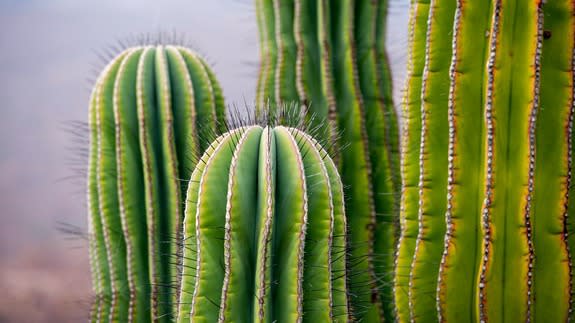The simple cactus may have the answer the clean tech industry needs

In the world of engineering, you can usually trust nature to have done it first, and better.
A newly-developed fuel cell technology looks to the cactus to solve a problem involving this promising but complex form of clean energy, which generates power without emitting planet-warming greenhouse gases.
The technology, which is a thin plastic membrane, could help improve the performance of fuel cells to make them more useful for everything from electric cars to desalination plants.
SEE ALSO: Elon Musk's SpaceX wants to send a spacecraft to Mars by 2018
The result of a collaboration between the CSIRO, Australia's peak science body, and Korea's Hanyang University, the research was published Thursday in the journal Nature.
The new membrane aims to help keep fuel cells cool, Aaron Thornton, CSIRO researcher and the report's co-author, told Mashable Australia, solving a significant problem for the development of green technology.
The problem the membrane is aimed at solving concerns a particular type of fuel cell, known as proton-exchange membrane fuel cells. Such fuel cells generate energy by mixing gases like hydrogen and oxygen.
Most currently available membranes can heat up and dry out, meaning the fuel cell loses performance. A common solution is to include an extra component near the fuel cell — a humidifier — that helps keep the membrane moist. But this adds weight and more complexity to the fuel cell.
The new plastic membrane can solve this problem by holding water and acting in a similar way to a cactus.
"Cactus actually have a round hole, called a stomata, [on their surface]," he explained, "that's responsible for opening them up in the cool of the night to absorb water, and closing up in the dry hot day."
The new membrane performs in much the same way, using two plastic, or polymer, skins. The internal skin, which actively draws in and holds water, is coated by a layer that repels water but also has tiny nano-cracks.
"This skin cracks and opens up when there is moisture available — it basically self-humidifies," Thornton explained. It then closes back up in low-humidity environments to retain the water.
This feature allows the performance of the fuel cell to be increased up to fourfold, he claimed. This could help fuel cells generate more electricity with less hydrogen, or reduce electric vehicle costs by getting rid of extra components such as the humidifier.

Image: csiro
Although it's only been tested in the lab so far, Thornton suggested the membrane could have a wide range of uses.
It could be used to attempt to harness electricity from the sea, for example. "Because ions are actually in the sea, if you could separate [the ions] from water and run them through something like a fuel cell, you could generate electricity," he explained, acknowledging such research is just getting started.
Kondo-Francois Aguey-Zinsou, the leader of the Materials Energy Research Laboratory in Nanoscale at the University of New South Wales, who was not involved in the new research, told Mashable Australia the study was valuable.
"One of the problems [with fuel cells] is water management," he said. "This can potentially lead to better fuel cell technology."
Nevertheless, the major hurdle to broadening the use of this type of fuel cell in clean technology is the cost, he suggested. "One of the main problems with fuel cells is the cost of platinum," Aguey-Zinsou said. "Membranes are a problem, but the highest cost of the fuel cell is the platinum catalyst that helps react the hydrogen and oxygen.
"If this problem is not met, this technology won't have a significant impact."
Maybe cacti have more cost-saving secrets to share?

 Yahoo News
Yahoo News 